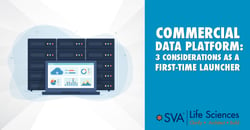Medical Affairs teams disseminate important data to members of the medical community to ensure accurate and up-to-date medical and scientific information is available for therapeutic decision-making. This information can impact patient success, especially when healthcare professionals and patients are considering treatment options.
It is therefore necessary to engage respected and influential experts in the medical community to ensure knowledge is current on disease states, emerging data on treatment options and data-driven best practices.
Understand the Medical Community and Its Experts
Understanding the makeup of the medical community is important to achieving critical information exchange between a life science company and medical experts. Identifying these medical experts begins with understanding the value and influence of an individual medical expert within their peer group.
This helps guide which people need to see which data and when, and allows your medical affairs team to focus on who is most likely to appropriately influence a cohort of healthcare practitioners and provide medical community insights back to the company for use in strategy and planning.
A medical expert identification exercise can be achieved in several ways, and it is important for emerging life sciences companies to take an appropriate, cost-effective approach when developing their list of key stakeholders.
Often, different data are needed at different times in the lifecycle of a life sciences company, and the largest cost of developing a stakeholder list can often be the data or intelligence tools from a third party.
SVA Life Sciences recommends taking a thoughtful, fit-for-purpose approach to what, if any, data acquisition purchases are needed to support the development of your initial medical expert list. The list and analysis can be enriched over time with third-party data sets, as needed.
 Commercial Data Platform: 3 Considerations as a First-Time Launcher
Commercial Data Platform: 3 Considerations as a First-Time Launcher
Client-Specific List Development Approach
SVA Life Sciences successfully navigates and understands the data used to generate a medical expert list by working with your team to identify the key medical expert attributes in your therapeutic area. This iterative and collaborative process allows for frequent input and tuning from your team to ensure the resulting list captures the appropriate individuals.
At the end, you are familiar with the inputs to the list and can clearly speak to the development process and the logic applied to segment individual medical experts.
Fit-For-Purpose Stakeholder Identification: Publicly Available Data Sources
"With significantly large publicly available structured data sets, find the activities that help you determine which healthcare providers can provide value to your organization." Benjamin Barlow, Solution Architect, SVA Consulting
There exist several publicly available data sources such as NPPES, CMS Open Payments, PubMed, and Clinicaltrials.gov. These sources give insight into thought leaders in a specified therapeutic area, and an idea of influence level, publishing history, and clinical trial activities.
An example output from this exercise is that your team will know which stakeholders have an emphasis in scientific and publishing activity versus an emphasis in clinical and patient experience (or both).
We leverage these sources initially to develop a base list that can stand on its own or be further enriched with additional internal (client) data sources or third-party data sources.
Internal data sources can include, but are not limited to, a list of current medical experts leading or participating in studies at your company, or even a home-grown list of medical experts the company has previously identified as thought leaders in a therapeutic area.
SVA has additional experience gathering and structuring data for analysis on medical experts from speaking engagements, congresses, and symposia related to a therapeutic area.
Once the medical experts are identified and key attributes are collected, we use data visualization tools to provide an interactive and dynamic way of weighing medical expert attributes to see real-time adjustments to your ranking segments.
Leveraging these publicly available data sources often is the right “fit” for early-stage and emerging life sciences companies.
Third-Party Data Sources: Enrichment and Ongoing Intelligence
Additional sources clients choose to leverage include Veeva Link, Komodo, Monocl ExpertInsight, claims data sets like Veeva Compass, and others.
These third-party intelligence tools and sources do an excellent job at surfacing up-to-date clinical and patient experience trends, publishing activities, congress activities, consulting activities, social media activities, and other attributes of medical experts that can be analyzed to establish a ranked and segmented medical expert list.
This data can be used in initial list development, however, as compared to publicly available lists (free), expect to spend a decent amount subscribing to these intelligence tools and data sources.
We frequently see clients leverage SVA to produce an initial list based on publicly available data sets, then engage us to analyze and integrate purchased data sets over time.
Leverage SVA Life Sciences Today
Engaging the medical community can be insightful at all stages of a life sciences company’s journey. It is always time to understand the current medical experts in your therapeutic area, and this begins with having the correct data in hand to support medical expert engagement.
Let SVA Life Sciences partner with you to take the next step in identifying your stakeholders or enriching your existing stakeholder list.

© 2023 SVA Life Sciences

